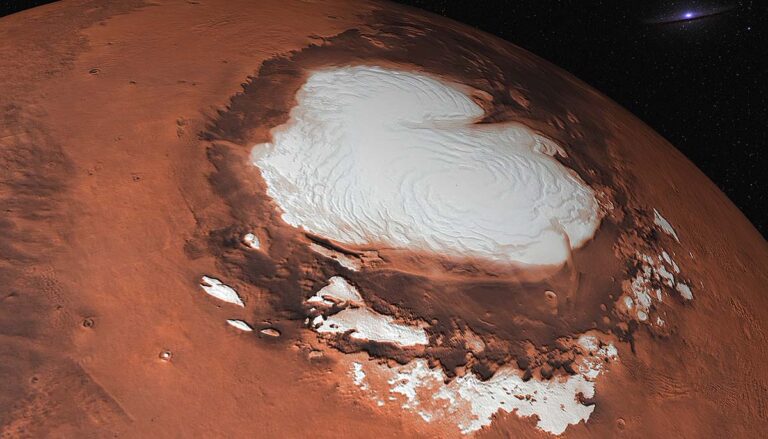A major breakthrough in the ongoing search for life in the universe as scientists find new evidence of liquid water on Mars. This discovery, located under its south polar ice cap, could suggest the Red Planet once hosted life.
Search for life: Scientists find new evidence of liquid water on Mars
In the first independent search that uses data other than radar, scientists have discovered new evidence suggesting there could be liquid water beneath the south polar ice cap of Mars.
The study involved a team of international researchers led by the University of Cambridge, the University of Sheffield, and the Open University. The researchers published their study in the journal Nature Astronomy on Thursday, the Daily Mail reported.
The team utilized a wide variety of techniques to examine data from NASA’s Mars Global Surveyor satellite. They focused on the surface topography of the part of Mars’ south polar ice cap where the radar signal was identified.
Similarities between Earth’s and Mars’ icecaps
Like Earth, Mars also has thick ice caps at its poles. In combined volume, these ice caps are roughly equivalent to the Greenland Ice Sheet.
While Earth’s ice sheets are underlain by water-filled channels, as well as large subglacial lakes, scientists had believed that those on Mars were completely frozen due to the frigid climate, Metro reported.
Temperatures on Mars average a bone-numbing -81 degrees Fahrenheit and can drop as low as -220 degrees Fahrenheit in winter at the poles.
However, that perspective has recently changed after this new Martian discovery.
Why scientists believe there is water on Mars
“This study gives the best indication yet that there is liquid water on Mars today because it means that two of the key pieces of evidence we would look for when searching for sub-glacial lakes on Earth have now been found on Mars,” said Dr. Frances Butcher, from the University of Sheffield, the second author of the study, in a statement. “In order to be liquid at such cold temperatures, the water beneath the south pole might need to be really salty, which would make it difficult for any microbial life to inhabit it.”
“Liquid water is an essential ingredient for life, although it does not necessarily mean that life exists on Mars,” Dr. Frances Butcher added. “However, it does give hope that there were more habitable environments in the past when the climate was less unforgiving.”
In addition, the new results obtained by the researchers agree with earlier measurements using ice-penetrating radar that were originally interpreted as showing a potential area of liquid water beneath the ice.
“The combination of the new topographic evidence, our computer model results and the radar data make it much more likely that at least one area of subglacial liquid water exists on Mars today, and that Mars must still be geothermally active in order to keep the water beneath the ice cap liquid,” said professor Neil Arnold, from Cambridge’s Scott Polar Research Institute, who led the research.





